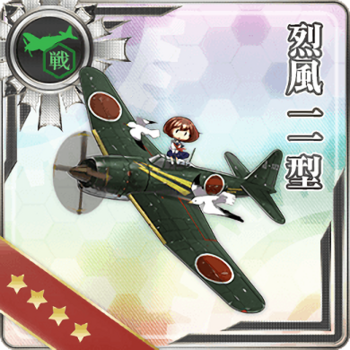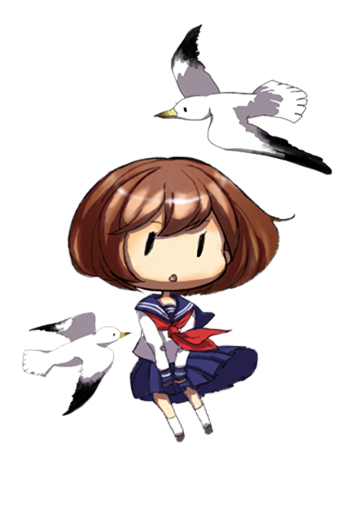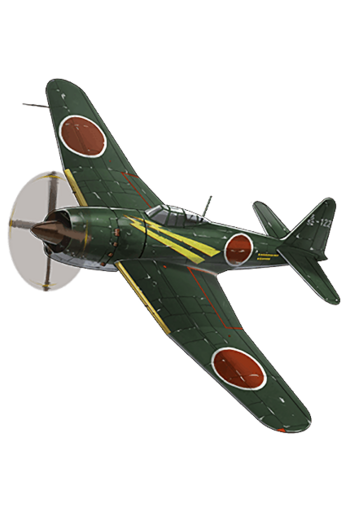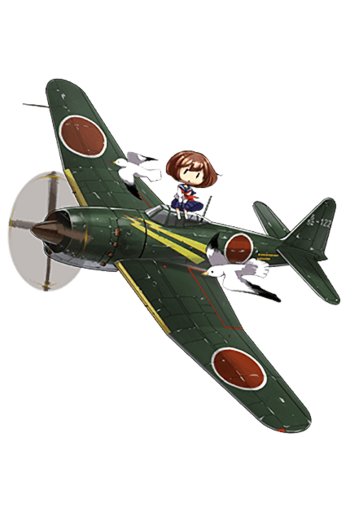- Welcome to the Kancolle Wiki!
- If you have any questions regarding site content, account registration, etc., please visit the KanColle Wiki Discord
Difference between revisions of "Reppuu Model 11"
Jigaraphale (talk | contribs) m (→Introduction) |
Jigaraphale (talk | contribs) m |
||
| Line 29: | Line 29: | ||
==Trivia== | ==Trivia== | ||
| − | + | {{:Reppuu}} | |
| − | |||
==See Also== | ==See Also== | ||
Revision as of 09:59, 15 March 2024
[Edit]
Strong Gale Model 11
No.53 烈風 一一型
| |
| Refittable Ship Types | |
| Fast Battleship | Battleship |
| Aviation Battleship | Standard Aircraft Carrier |
| Armored Carrier | Light Carrier |
| Heavy Cruiser | Aviation Cruiser |
| Light Cruiser | Torpedo Cruiser |
| Training Cruiser | Destroyer |
| Coastal Defense Ship | Submarine |
| Aircraft Carrying Submarine | Seaplane Tender |
| Fleet Oiler | Submarine Tender |
| Repair Ship | Amphibious Assault Ship |
| LBAS Plane | |
Introduction
名機「零戦」の後継機として開発された最新鋭艦上戦闘機「烈風」。
その性能向上型が「烈風改」です。
レシプロ艦上戦闘機として、究極の領域まで高められた秘めた戦闘能力を、提督の艦隊の防空や制空でぜひ発揮させてくださいね。
最近、数十年の時を越えて、設計図が発見されたニュースもありました!
The name of the state-of-the-art machine that was developed to be the successor of the "Zero" carrier-based fighter, is "Reppuu".
This is the improved performance type, "Reppuu Kai".
As a reciprocating carrier-based fighter, its latent combat capabilities have been raised to the apex, for Admirals' fleet air-defense and air-control.
Recently, after several decades, there was news that the design documents were discovered!
Mechanics
Fighters![]()
![]() /
/![]() are one of the main types of plane used by CV(B/L). Their main role is to bring Air Power during the 1st Aerial Stage, with their "Fighter Power"
are one of the main types of plane used by CV(B/L). Their main role is to bring Air Power during the 1st Aerial Stage, with their "Fighter Power" ![]() stat being the most important factor in this regard. Fighters are additionally needed for Aircraft Carrier Cut-Ins (CVCI) during the day Shelling.
stat being the most important factor in this regard. Fighters are additionally needed for Aircraft Carrier Cut-Ins (CVCI) during the day Shelling.
- They can be used in Land Bases to serve the same role as Interceptors.
Notes
Not to be confused with other aircraft of this family (see here).
How To Obtain
From quest: F80 (choice)
Ranking reward for:
- Apr 2015: 1-5, 6-20
- Jul 2016: 1-5, 6-20, 21-100, 101-500
- Oct 2016: 1-5, 6-20, 21-100, 101-500
Event reward for:
Updates History
- 2013-05-08: Added to game data and announced to be obtainable in the future
- 2014-04-23: Implemented with Spring 2014 Event
- 2019-03-08: Name changed from "Reppuu Kai" (烈風改) to "Reppuu Model 11" (烈風 一一型), card CG updated
Trivia
The Mitsubishi A7M Reppū ("Strong Gale", Allied reporting name "Sam") was a naval fighter developed as a successor to the infamous A6M Zero.
The result of the 17-shi carrier-based fighter specification, the Zero's successor (then referred to as Navy Experimental Type 17 Type-A) was expected to be able to climb to 6 000 m in less than 6 min and then fly above that altitude at 639 km/h, all while carrying two 20 mm cannons and two 13 mm machine guns and retaining the A6M3's impressive maneuverability.
The Reppū's development was delayed due to development issues related to the engine and airframe, as well as production prioritizing other aircraft.
The A7M1 Reppū prototype finally flew in May 1944, demonstrating excellent handling and maneuverability but could not attain its lofty 640 km/h target due to the underpowered NK9 engine. The Navy ordered development stopped due to the failure, but Mitsubishi obtained permission to test the aircraft with the MK9 engine.
The A7M2 prototype flew in October 1944, achieving a top speed of 628 km/h while surpassing the Zero in many metrics, leading the Navy to officially adopt the type. Saburo Sakai declared it was the finest fighter he had ever seen, while engineers claimed it could fight at altitudes up to 12 km.
The Reppū was expected to replace the Zero as the standard fighter of the IJN, but production was disrupted due to earthquakes, Allied bombings, and the loss of schematics and manufacturing jigs. The Reppū subsequently never flew in combat.
The A7M3-J "Reppū Kai" was a proposed interceptor variant of the Reppū, with an increased maximum speed of 648 km/h using a 2 200 hp forced-induction version of the Mitsubishi MK9 and an armament consisting of six 30 mm cannons. No working prototype was ever produced, the design documents being lost in the bombings of March 1944.



